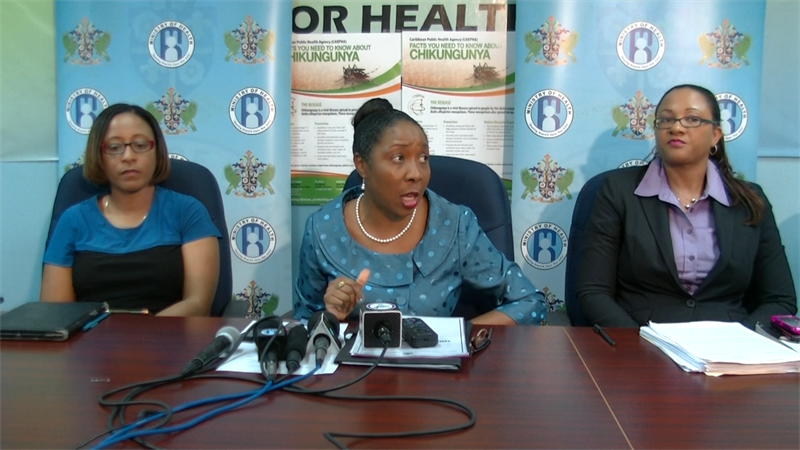Prevention, by destroying the breeding sites of the mosquito, is key, she says.

Minister for Health, Wellness and Gender Relations, the Hon. Alvina Reynolds, implored individuals and communities to help curb the spread of Chikungunya and other vector-borne diseases, by reducing the breeding sites of the Aedes Aegypti mosquito.
The mosquito is the vector responsible for the spread of Chikungunya, as well as dengue fever.
Ministry officials said that because people travel frequently, incidences of those who contracted the virus were expected. What wasn't, were the number of breeding sites discovered by Environmental Health Officers.
“Health officers found that drums and barrels accounted for 60 percent of the total breeding grounds for the Aedes Aegypti,” Minister Reynolds said. “This is important. Our surveillance also revealed that tires, water tanks, and vases, accounted for another 30 percent of the mosquito breeding grounds. These are areas that people can manage.”
Minister Reynolds said it is the responsibility of individuals to work toward prevention, along with the Ministry of Health.
“It seems that the information that is being disseminated is not being translated into behavior change. We all have a responsibility to clean up our spaces, especially as we get ready for the rainy season. We are putting forward a call to action for each person—man, woman and child—to manage their personal space, and on a wider scale, their communities.”
Health officials have been assiduous in minimizing the impact of Chikungunya in Saint Lucia. Vector Control Teams and have been working along with communities using a multi-pronged approach: surveillance, which includes home and site visits; education via sensitization seminars, information dissemination, and training; and mobilization which includes targeting the larva via site treatment, and the adult mosquito by fogging.
However, the minister said that government will not be able to continue fogging indefinitely, as finances are already strained. “We can do a lot more if we take personal responsibility for managing and preventing this disease,” she said.
The first confirmed case of Chikungunya in Saint Lucia was discovered on April 1. To date, the number of recorded cases has risen to 20.